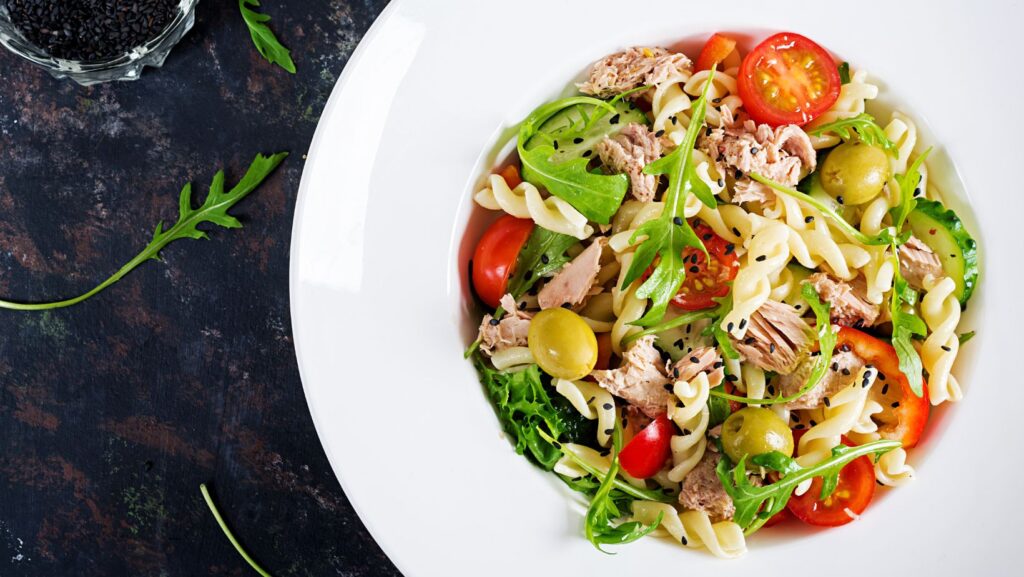
Are you wondering how long tuna salad is good for in the refrigerator? Well, let me shed some light on this common question. Tuna salad, made with mayonnaise and other perishable ingredients, can be a delicious addition to your meal prep routine. However, it’s important to know how long it can safely be stored in the fridge.
Typically, homemade tuna salad can last for about 3-5 days when properly stored in an airtight container in the refrigerator at or below 40°F (4°C). This timeframe may vary depending on factors such as the freshness of the ingredients used and the temperature of your fridge. It’s crucial to use your judgment and rely on sensory cues like smell and texture to determine if the tuna salad is still safe to eat.
How Long Is Tuna Salad Good for in the Refrigerator
Factors That Affect the Shelf Life of Tuna Salad
When it comes to determining how long tuna salad lasts in the refrigerator, several factors come into play. Understanding these factors can help you gauge the freshness and safety of your homemade tuna salad. Here are a few key considerations:
- Ingredients: The quality and freshness of the ingredients used in your tuna salad directly impact its shelf life. If you use fresh, high-quality ingredients, your salad is likely to last longer compared to one made with older or lower-quality components.
- Storage Temperature: Keeping your tuna salad at a consistently cold temperature is crucial for prolonging its shelf life. The refrigerator should be set at or below 40°F (4°C) to inhibit bacterial growth and maintain optimal freshness.
- Hygiene Practices: Proper food handling practices play a significant role in preserving the longevity of tuna salad. Ensure that all utensils, surfaces, and hands are clean when preparing and serving the dish to minimize contamination risk.
Proper Storage Techniques for Tuna Salad
To maximize the shelf life of your homemade tuna salad, follow these storage guidelines:
- Cover tightly: Store your tuna salad in an airtight container or wrap it tightly with plastic wrap before placing it in the refrigerator. This helps prevent exposure to air, which can cause oxidation and spoilage.
- Refrigerate promptly: After making or purchasing your tuna salad, refrigerate it within two hours to minimize bacterial growth. If left at room temperature for too long, harmful bacteria can multiply rapidly.
- Use within three to five days: As a general guideline, consume refrigerated tuna salad within three to five days for optimal flavor and safety. While it may still be safe beyond this period if stored properly, its taste and texture may deteriorate over time.
Storing Homemade Tuna Salad Properly
How to Store Homemade Tuna Salad in the Refrigerator
When it comes to storing homemade tuna salad, proper storage techniques are crucial to maintain its freshness and prevent any risk of foodborne illnesses. Here are some essential tips for safely storing your tuna salad in the refrigerator:
- Temperature control: Keep your refrigerator at or below 40°F (4°C) to ensure that the tuna salad stays within a safe temperature range.
- Transfer into an airtight container: Place your homemade tuna salad into a clean, airtight container. This helps to preserve its flavor texture and prevents it from absorbing any odors from other foods in the fridge.
- Label and date: Don’t forget to label the container with the date you made the tuna salad. This will help you keep track of its freshness and avoid consuming it past its recommended shelf life.
- Refrigerate promptly: After making homemade tuna salad, refrigerate it as soon as possible, preferably within two hours of preparation. Bacteria can multiply rapidly at room temperature, so don’t leave it sitting out for too long before cooling.
The Best Containers for Storing Tuna Salad
Choosing suitable containers plays a vital role in preserving the quality of your homemade tuna salad. Consider using these types of containers for optimal storage:
- Glass containers: Glass containers are excellent options for storing tuna salad due to their non-porous nature, which prevents flavors from seeping into or out of the food. They are also easy to clean and don’t retain stains or odors over time.
- Plastic containers with tight-fitting lids: Look for high-quality plastic containers with secure lids that create an airtight seal. Ensure they are BPA-free and microwave-safe if you plan to reheat the tuna salad.
- Mason jars: If you prefer a more sustainable and eco-friendly option, mason jars can be an excellent choice. They are versatile, easy to clean, and provide a tight seal that keeps your homemade tuna salad fresh.
In conclusion (I couldn’t resist!), being able to recognize the signs of spoiled tuna salad is crucial for maintaining good health and preventing foodborne illnesses. By paying attention to these indicators, you can enjoy your homemade tuna salad while it’s still fresh and delicious. Tips for














